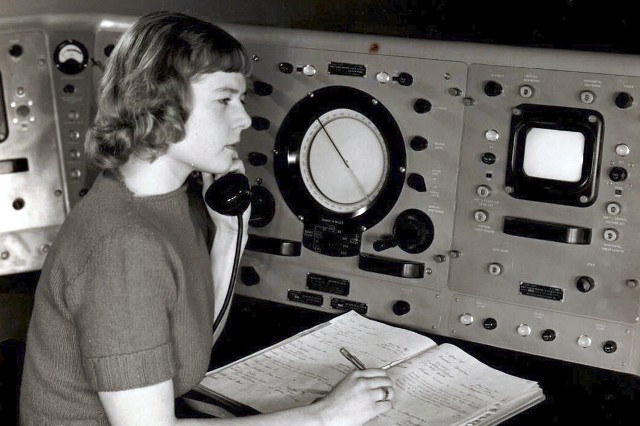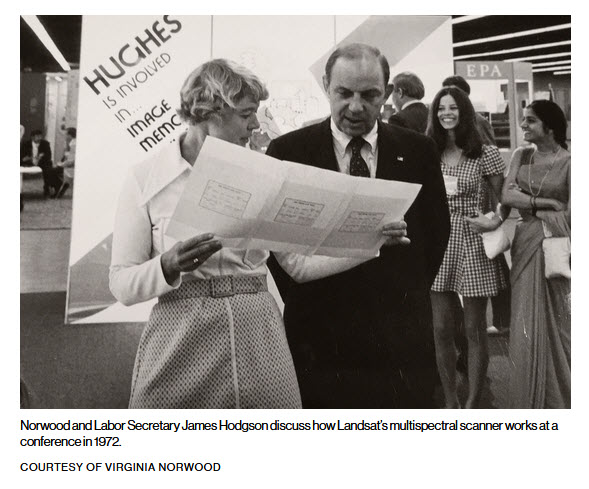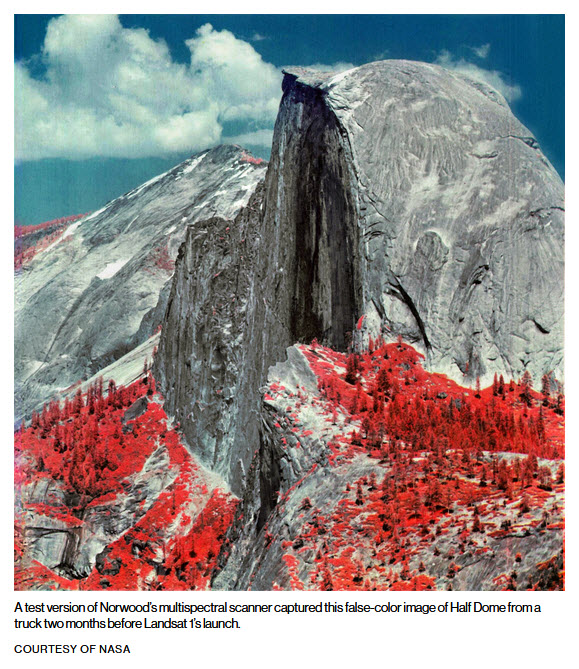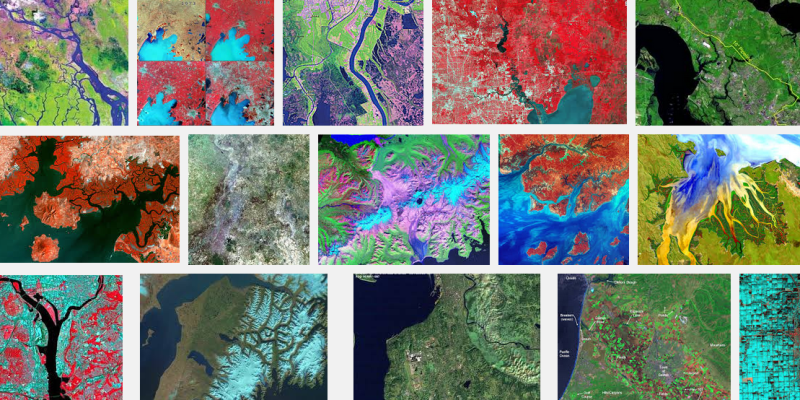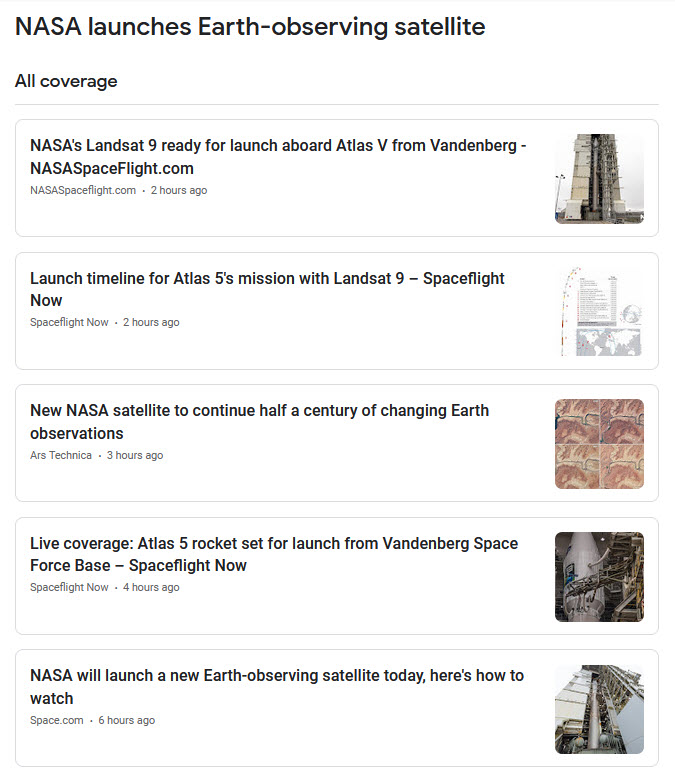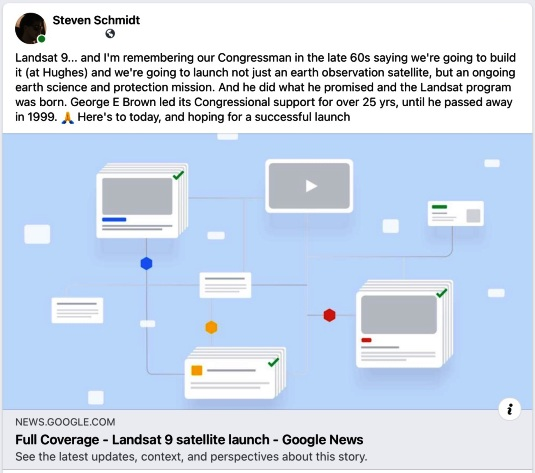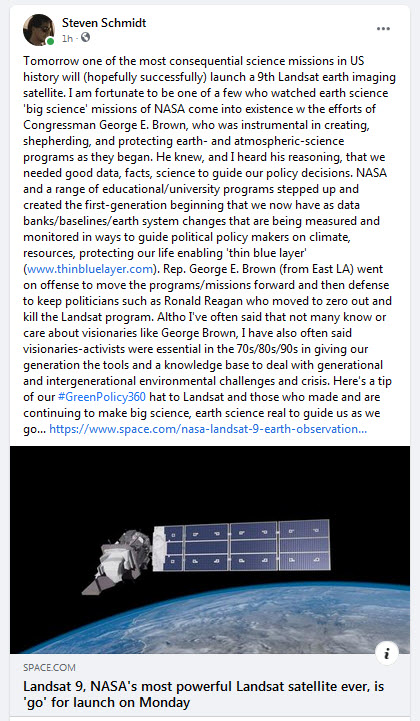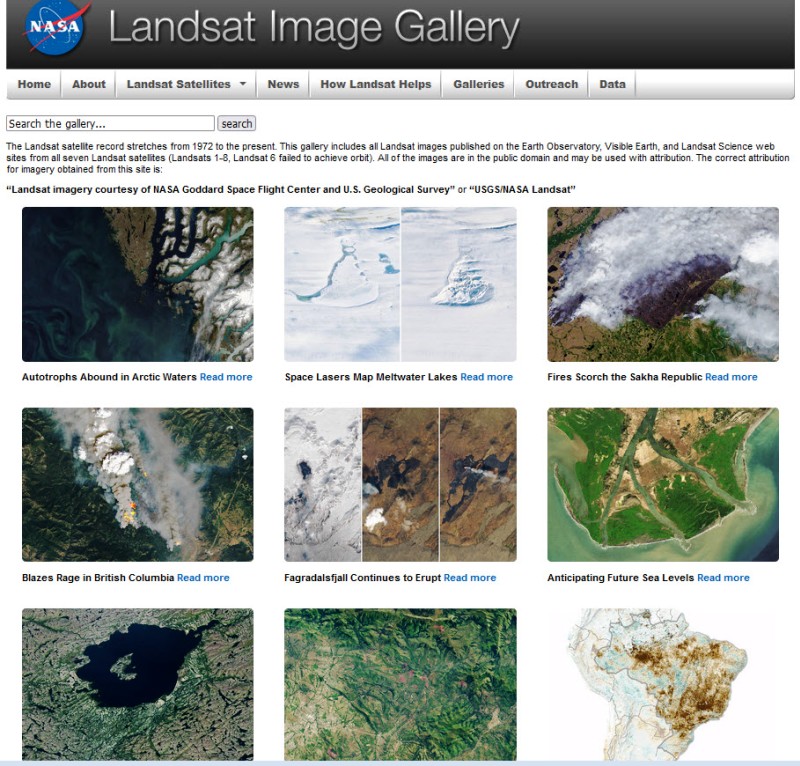LANDSAT and Virginia Tower Norwood
(At the beginning of Virginia's career - 1948)
A Story of the Genius of Virginia Tower Norwood and the Launch of Landsat Generation of Earth Science
GreenPolicy360 Siterunner: In the late 1960s and early 70s, Congressman George Brown on the Space and Technology Committee was pressing forward with NASA's development of the first array of earth science satellite missions. Near the top of his list of project missions was LANDSAT 1.
Representative Brown was out in front of "Big Science". In his decades on the House Science, Space & Technology Committee, he worked to expand the reach of science. He knew that good data enabled good policy decisions. He pressed for first-generation earth science satellites and ongoing earth monitoring missions and data sharing.
Among his many initiatives, George Brown was a key figure in proposing, establishing, and then saving the Landsat program and its unique 'open-access' database of Earth Science imaging when President Reagan attempted to shut Landsat down. Landsat was a model for all the following earth science research missions from space and is now moving into its fifth decade with Landsat 9.
Virginia Tower Norwood's Vision
Here we focus on the amazing story of Virginia Tower Norwood who invented technology that made LANDSAT's digital spectral imaging possible. In many ways, while inventing and convincing the reluctant aerospace men around her that digital imaging was the way to go, she was also continuing to be a first mover, graduating from MIT and creating a path of success for a next generation of women as scientists and engineers who would change the world.
The following excerpt from the MIT June magazine cover story shows us what went into the first LANDSAT mission -- an ongoing earth imaging and research data bank that is now going on fifty plus years. LANDSAT 9 is about to be launched and the open source archive of digital multispectral imagery is an unprecedented and unequaled font of knowledge tracking changes of Earth's systems and resources over time, a scientific treasure.
The woman who brought us the world
Via MIT Technology Review
A half-century ago, Virginia Tower Norwood, MIT 1947, invented the first multispectral scanner to image Earth from space. Landsat 1 and its successors have been scanning the planet continuously ever since.
Getting ready for Earth’s close-up
She knew NASA and the US Geological Survey were talking about building a satellite to observe Earth and monitor its resources. “With a satellite, you can get up to mountaintops and all the places the geologists would like to know about and didn’t have data for,” she says. NASA was planning to equip the satellite with return beam vidicon (RBV) cameras—television cameras similar to those used for the moon missions. The idea was to capture freeze-frame analog images of Earth using three RBVs with different filters to record the green, red, and near-infrared sections of the electromagnetic spectrum.
Norwood thought that a multispectral scanner (MSS) could be more useful. Such a scanner would be able to capture both visible and invisible light and sort it into more than just three spectral bands, creating a treasure trove of information. One band, for example, would allow the study of water quality; another would reveal the vigor of crops; a third could show chlorophyll absorption; others could be used to determine soil moisture or the density of snowpack.
In fact, (Labor Dept) agronomists had already been sending spectrometers up in planes to collect such data on a sampling of fields. But a satellite scanner would gather images on a continuous basis, letting agronomists monitor precisely how many acres of specific crops were growing, potentially anywhere in the world. Arborists could spot early signs of disease and blight in trees and take action before they spread. Those managing dams and watersheds would have regular feeds of data on soil moisture and flooding. Census managers could track how quickly wild and agricultural land became urbanized, and economists could gauge the relative economic prosperity of neighborhoods by comparing the extent of their green space.
What’s more, the scanner would be digital. Its detectors would capture individual pixels, each representing an area roughly the size of a football field. Those pixels would be strung together to form lines of data that could then be compiled to form images line by line. Digital images could be analyzed with computers, and data from different spectral bands could be compared—offering far more precision than visual analysis of analog images. And that ability to analyze spectral data made it possible to identify the material being imaged. For example, fields of wheat and corn would look the same from space but could be distinguished by their unique spectral signatures. The possible uses of a multispectral scanner seemed endless.
Norwood pitched her idea to the top brass at Hughes and was given $100,000 to develop a prototype to show NASA.
She met with potential users to find out what sorts of data they needed, and zeroed in on the six spectral bands that would be most useful. Then she set about designing a system that could efficiently image those bands and relay the data back to Earth.
NASA had determined that the satellite would orbit around the poles at a height of 500 nautical miles. As it traveled from north to south while the planet rotated beneath it, Norwood’s scanner would need to record the light reflected off a diagonal strip of Earth 100 nautical miles wide. With each orbit, Earth would have rotated, and a new 100-nautical-mile strip would be lined up for scanning. Over the course of 18 days, the entire planet could be scanned — and then the whole process would repeat. The scanner would always be in the same relation to the sun at each latitude, so the lighting would be consistent when the strips were pieced together.
Norwood realized from the outset that the scanner couldn’t withstand the wear and tear of moving back and forth to capture the width of the strip. So she had the idea of using a mirror that would pivot back and forth to reflect the light into it. The incoming light would be filtered into the six spectral bands, and then directed to separate detectors for each band. To keep up with the speed of orbit, the scanner would need to capture six lines at a time, so each spectral band needed six sensors. The sensor data would be digitized and sent to receiving stations on the ground, where it could be decoded into images for each spectral band or combined as needed to create composite images.
Norwood was adamant that the data stream should be digital. NASA had serious reservations, doubting that the six-bit MSS data could produce high-quality images. But she knew that a continuous analog signal would be difficult to process accurately. Going digital would make it possible to calibrate the photon levels from each sensor very precisely. “And you do want it to be accurate,” she says: otherwise “you get a striped mess” when the data is reconstructed into images. So she worked with a microwave colleague at Hughes to figure out how best to digitize the sensor data. As the MSS imaged the US, data would be relayed to US ground stations in real time; images of the rest of the world would be stored on videotape until they could be beamed down to the US stations. (Later, ground stations would be established around the world.)
Ultimately... the MSS data would be the first data transmitted digitally from space. And it would set the standard for future quantitative remote sensing. ...
If some at Hughes were skeptical, many researchers at the US Geological Survey and NASA were convinced that the MSS couldn’t possibly yield useful data. They were all familiar with the vidicon television cameras used for Surveyor and early Apollo missions and accustomed to the full-frame analog images they captured. They balked at the idea of launching an untested mechanical device that scanned line by line—and relied on a banging mirror, of all things. The debate over which system should prevail dragged on for more than a year. “Mapmakers like myself were very suspicious of the multispectral scanner, which we could not believe would have geometric integrity,” USGS cartographer Alden Colvocoresses would later confess.
“The only ones that were really skeptical that I encountered really didn’t understand how it worked. They knew that there was a banging mirror,” Norwood says. “They just felt that was too crude.” Fortunately, she adds, she only had to convince her upper management—and they were all pretty smart people.
When NASA asked for a reduction in the scanner’s size, weight, and power requirements, Norwood and her team pared down the design from a six-band scanner to one with four bands. The prototype, which measured 89 by 59 by 40 centimeters, had a 9-by-13-inch oval mirror (made of beryllium so it could withstand the banging and wouldn’t warp or vibrate) and the controversial bumpers that made the engineers cringe. It weighed just 48 kilograms, or about 105 pounds.
Norwood had researchers load a breadboard version of the scanner onto the back of a truck. It amounted to “just a bunch of boxes,” she says. “We could use all the weight we wanted.” They drove around California, scanning Half Dome, Yosemite Valley, and San Francisco’s skyline. Having labored so long over the specs, Norwood wasn’t surprised by the high quality of the test images.
NASA ended the RBV-versus-MSS debate by deciding to include both on the satellite. There wasn’t time or money to turn Norwood’s prototype into a final, refined product, so the prototype itself was used. As her daughter, Naomi Norwood, says, “Nobody expected it to work except my mom and some other people who worked on it.” Most people assumed that the vidicons would be valuable; the scanner was considered experimental. “The average person didn’t realize what a distorted picture a TV camera puts out,” Norwood says. “We wanted scientific precision.”
A stunning debut
On July 23, 1972, Norwood sat with her husband and younger son in the bleachers at California’s Vandenberg Air Force Base as the Earth Resources Technology Satellite (which would later be renamed Landsat 1) launched with her MSS prototype aboard. “I had never seen a rocket launch in person,” she says. “So that was exciting.”
Two days later, researchers convened at NASA’s Goddard Space Flight Center to see the first MSS data translated into images. When scenes of clouds gave way to wavy images of land, a technician complained about the “terrible” moiré pattern. But soon they realized that the image was of the Ouachita Mountains in Oklahoma, the wavy lines accurately representing the folds of the range. One geologist got tears in his eyes. “I was so wrong about this,” admitted another, who’d been an MSS skeptic. “I’m not going to eat crow. Not big enough. I’m going to eat raven.” ....
The data Norwood’s MSS was sending back to Earth — digitally — was yielding stunningly clear and sharp images.
“I’d go to meetings and people were just jumping up and down because they had discovered another use for the data,” she says. And not just scientists: for years, anyone in the world could purchase a Landsat image of any place on Earth for just $1.25. Image access and prices shifted over the decades — but in 2009, all Landsat images became available for free.
Norwood was involved in the next four versions of Landsat, which launched in 1975, 1978, 1982, and 1984; Landsats 4 and 5 flew not only versions of her four-band MSS but also her original design. (Called the “thematic mapper,” it scanned six spectral bands as she’d initially envisioned, plus one more...)
... the Landsat scanning program that she brought to life has been keeping an eye on the world since 1972. The scanners have continued to evolve over the years... Landsat 9 is scheduled to launch in September 2021.
Landsat’s impact has been far greater than (Siterunner: almost)_anyone could have imagined in 1972 (Siterunner: Rep. Brown envisioned, spoke and wrote about this future). Beyond playing a key role in ushering in the era of digital imaging, its scanners have chronicled the near disappearance of the Aral Sea between Kazakhstan and Uzbekistan, a lake that was the world’s fourth largest before two of its feeder rivers were diverted for agricultural use. Landsat’s images of the 1988 Yellowstone Park fires greatly advanced our understanding of fire science. It has also documented such things as the retreat of glaciers, the stunning growth of Beijing, and the eruption of Mount St. Helens in 1980.
(Siterunner: Our GreenPolicy360 tip of the hat to Virginia Tower Norwood, a true Planet Citizen)
LANDSAT 9 is about to be launched and the open source archive of digital multispectral imagery is an unprecedented and unequaled font of knowledge tracking changes of Earth's systems and resources over time, a scientific treasure.
Multispectral Imagery
🌎
Landsat, #PlanetCitizens, #PlanetScientists
Beginning with Visionaries in the 1960s
New Visions of Earth Imaging -- a Half Century of Earth Observations, Earth Science, Environmental Protection
- Atmosphere
- Atmospheric Science
- Biodiversity
- Citizen Science
- Clean Air
- Clean Water
- Climate Change
- Climate Policy
- Earth
- Earth360
- EarthPOV
- Earth Day
- Earth Imaging
- Earth Observations
- Earth Science
- Earth Science from Space
- Earth System Science
- Eco-nomics
- Ecological Economics
- Ecology Studies
- Environmental Laws
- Environmental Protection
- Environmental Security
- Environmental Security, National Security
- EOS eco Operating System
- Global Security
- Global Warming
- GreenPolicy360
- Maps
- NASA
- New Definitions of National Security
- NOAA
- Oceans
- Planet Citizen
- Planet Citizens
- Planet Citizens, Planet Scientists
- Pollution
- Resilience
- Rivers
- Strategic Demands
- Sustainability
- Sustainability Policies
- Toxics and Pollution
- US Environmental Protection Agency
- Water Quality
- Whole Earth
